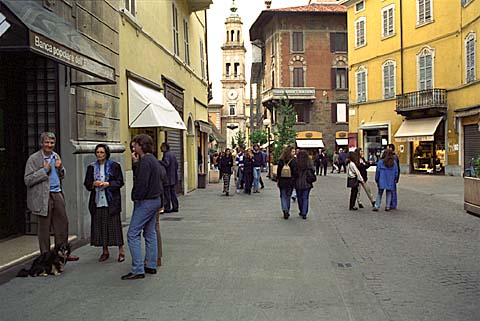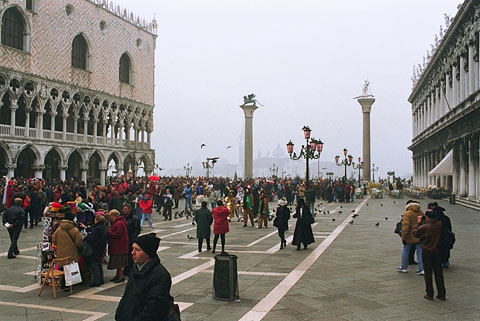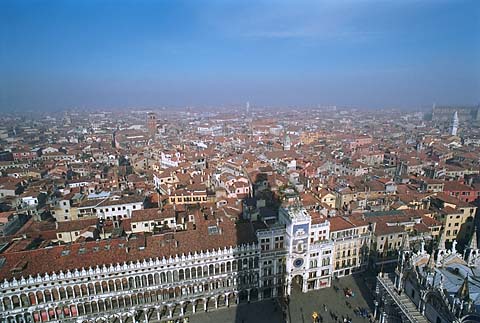

Sundown, Parma
The ProblemThe industrialized nations made a terrible mistake when they turned to the automobile as an instrument of improved urban mobility. The car brought with it major unanticipated consequences for urban life and has become a serious cause of environmental, social, and aesthetic problems in cities. The urban automobile:
The SolutionThe urban automobile can only be supplanted if a better alternative is available. What would happen if we designed a city to work without any cars? Would anyone want to live in such a city? Does it make social, economic, and esthetic sense? Is it possible to be free of the automobile while keeping the rapid and convenient mobility it once offered? | Public transport is typically a disagreeable and slow substitute for the car. It needs to become a pleasant experience and should attain the average speed of a car in light city traffic. This can be achieved using proven technology, but densely-populated neighborhoods are a prerequisite for rapid mobility and economical public transport. Fortunately, dense cities can also offer a superior quality of life. We should build more carfree cities. Venice, the largest existing example, is loved by almost everyone and is an oasis of peace despite being one of the densest urban areas on earth. We can also convert existing cities to the carfree model over a period of decades.  Piazza San Marco, Venice One of the world's great public spaces Design GoalsThe design of cities is driven by three principal needs:
Design StandardsThe fulfillment of these needs in a carfree city gives rise to the following design standards:Rapid TransportProvide fast access to all parts of the city. In a city of one million it should be possible to get anywhere in considerably less than an hour. Passengers should never have to transfer more than once.Nearby StationsBoth in consideration of time and of the limited mobility of small children, the elderly, and the infirm, nearby transport halts are required. The design standard is a five-minute walk.Nearby Green SpaceGreen space should be available within a five-minute walk of virtually every front door.Four-Story Buildings Venice: a fine-grained city, four stories high Economical Freight TransportCity economies depend on fast, economical freight transport. A city which intends to keep trucks off its streets must make workable provisions for freight transport.Going CarfreeThe carfree city can be built. Venice is proof enough. The four billion inhabitants of the developing world seem eager to adopt Western patterns of car use. They should be advised of the costs and encouraged to think about better solutions. Can the planet carry the ecological burden? The developed nations cannot deny developing nations the use of technology and resources that are used in the developed nations. Since most of the world's cars are found in the developed nations, they must take the lead in designing and building carfree cities.Carfree cities probably must become the norm by the end of the 21st Century, due to energy constraints. We should begin now to prepare for the change, which is an opportunity to build urban environments superior to any ever known. |
Continue on to Topology
Return Home
About the book: Carfree Cities E-mail
carfree.com
Copyright ©1996-2002 J.Crawford
 CARFREE CITIES The First Book |  Carfree.com - the web site that goes with the books. Carfree Cities and Carfree Design Manual propose a delightful solution to the vexing problem of urban automobiles. |  CARFREE DESIGN MANUAL The Second Book | ||||||||||||||||||||||
| | | | | | ||||||||||||||||||||
|
|
|
|
| ||||||||||||||||||||
| | ||||||||||||||||||||||||



















